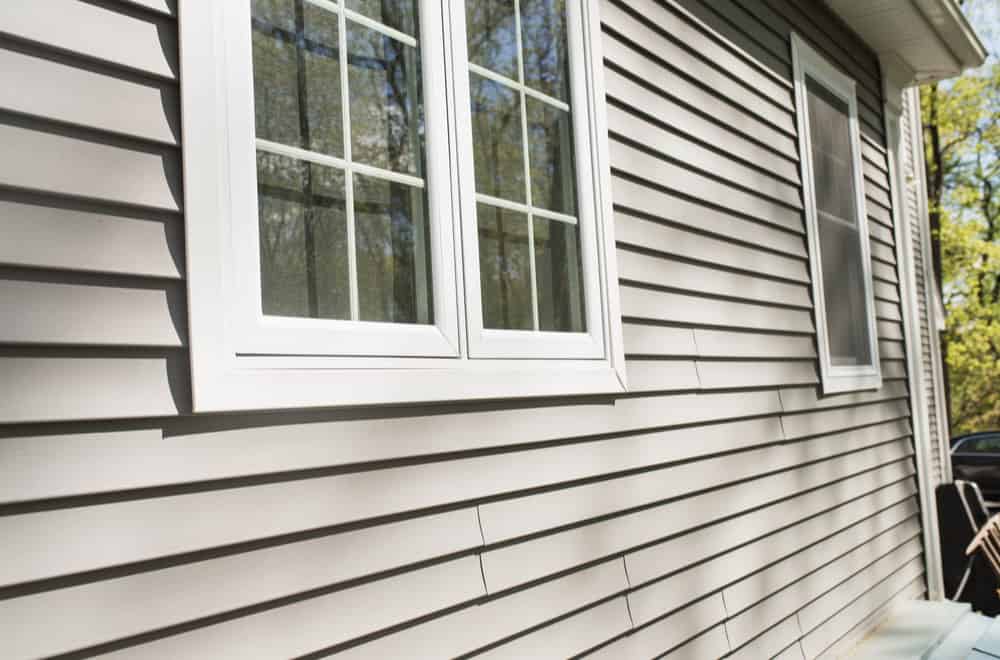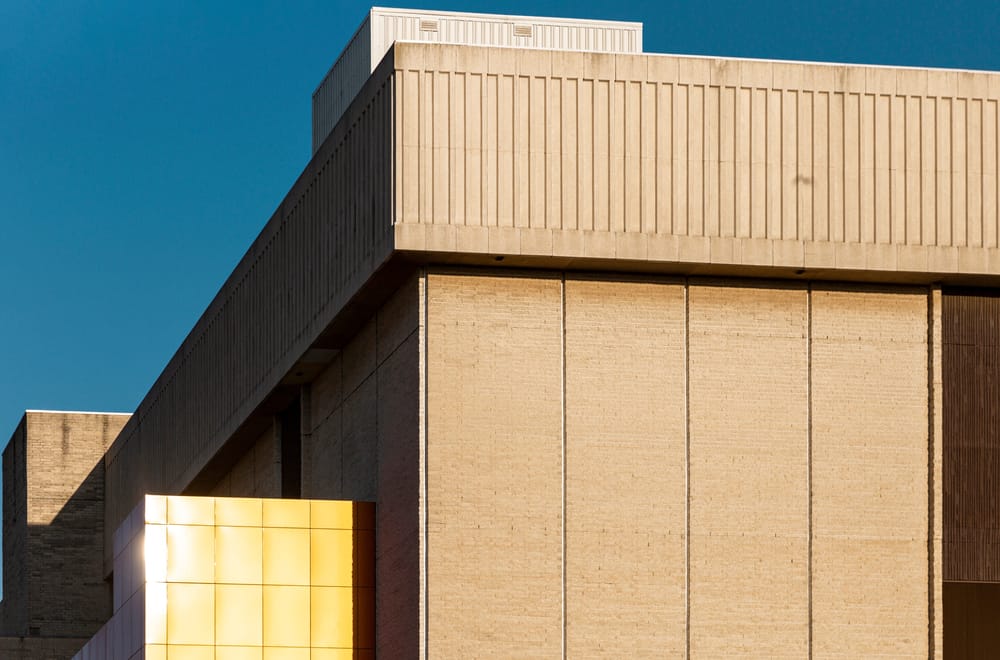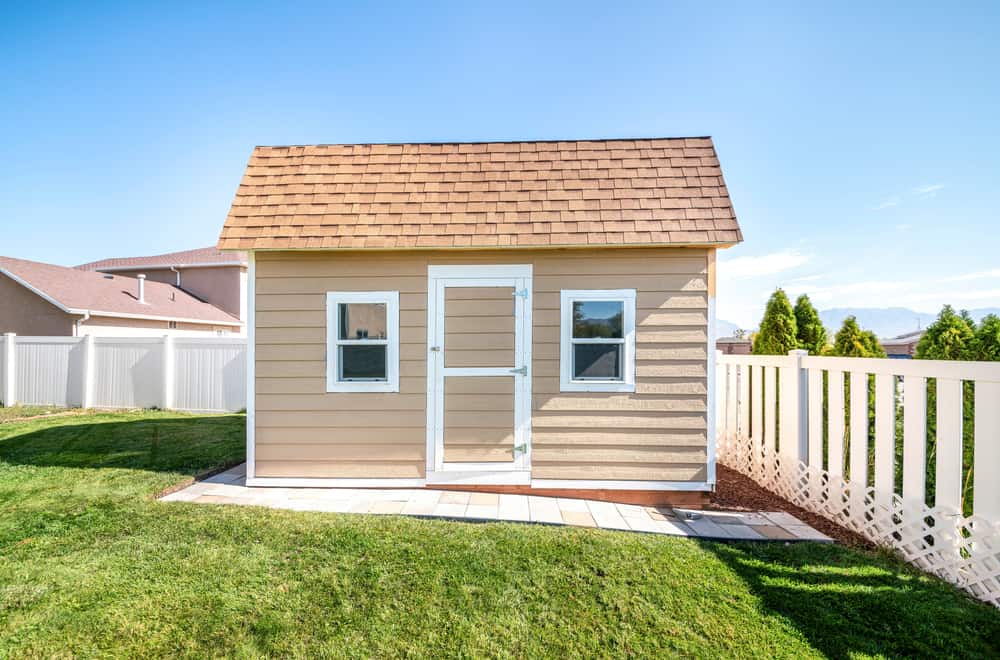What type of siding is the most durable? Which one costs less? Which one is a better insulator? These are a few of the very common questions that revolve around our minds when it’s time to replace sidings.
To help you make your decision swiftly, we’ll compare two of the most fantastic siding options – composite siding and vinyl siding in terms of aesthetics, durability, stability, installation, cost, insulation, and maintenance. So, what are we waiting for? Let’s get started!
Table of Contents
Composite Sidings: What are They?
First, let’s get to know the basics of composite sidings. By definition, composite sidings are sidings made up of two or more types of materials. These sidings are simply made up of scrap wood bonded together with resin.
Another popular type of composite siding – fiber-cement siding, which was first developed in the 1980s, is made up of wood fibers, cement, and silica.
Composite sidings, consisting of wood fibers, look and feel more true to wood than vinyl sidings. However, composite sidings without any wood are being developed these days.
Vinyl Sidings: What are They?
Vinyl sidings made their first appearance on the commercial market during the late 1950s. These sidings made up of Poly Vinyl Chloride (PVC) were first introduced as a siding alternative to aluminum sidings.
Vinyl siding has gradually increased in popularity since its invention, and today, it is one of the most popular siding options available in the commercial market.
There are plenty of benefits vinyl sidings offer to their users. However, we believe that the cost-effectiveness and the ease of installation of vinyl sidings are some of the characteristics that are loved by many homeowners.
Composite Siding Vs. Vinyl Siding
Now that we know the basics of these two siding options, we can compare them on the basis of the below-mentioned categories.
We’ll take into consideration all the categories that homeowners assess before buying the sidings for their home exterior. Let’s start with the aesthetics that these two sidings impart.
1. Aesthetics
We agree that the exterior sidings have many more structural and protective roles to play. But we cannot discount their role in beautifying your home exterior. An aesthetic exterior also ensures a greater price if you’re planning on selling the house.
As we all know, vinyl sidings come in varieties of prints and colors. It also mimics real wood very well. But many complain that the look and feel of vinyl sidings aren’t as warm as natural wood.
If you too are worried about that, composite sidings will save your day as they impart the same warmth of authentic wood sidings, as it consists of a significant amount of wood fibers.
2. Durability
Composite sidings are impressively durable and have a lifespan of about 30 years or more with proper care. Despite being made up of wood, composite sidings these days are treated for fungi protection, rot resistance, water resistance, and wood-boring insect resistance.
Composite sidings offered by good brands do not imbibe much water and are even treated for fire resistance. Composite sidings are also incredibly impact-proof.
Many good companies also treat their composite wood sidings for split resistance these days. All these reasons make sure that if you install composite sidings on your home, you’ll have little to worry about for a really long time.
Vinyl sidings are also quite durable and last for about 15 years or more if maintained properly. These sidings are water-resistant and further treated for insect resistance.
Vinyl sidings are not as impact resistant as composite sidings are and thus, can dent or scratch when impacted, especially with sharp or heavy objects.
3. Stability
Despite consisting of wood, composite sidings are amazingly stable to nature-induced problems such as expansion, contraction, and water-induced swellings. These do not expand, contract, swell as natural wood does, partly because of resins and glues that hold the fibers together.
Composite sidings do not saturate with water even under heavy rain and thus maintains their stability in even worst scenarios.
On the other hand, vinyl sidings are more susceptible to expansion and contraction induced by weather changes. While a year or two is not enough to notice the damage caused by these weather changes, vinyl proves to be less stable than composite sidings over the long run.
Moreover, with heat sources nearby, such as a grill or sunlight reflecting from your neighbor’s energy-efficient windows on your vinyl siding exterior, you might notice heat damages on the vinyl surface, such as buckling up and losing stability.
4. Ease of installation
Vinyl sidings aces this category with flying colors. Due to its lightweight property and easy-of-installation, many homeowners prefer DIY installation when it comes to vinyl sidings.
One doesn’t need to gather much manpower or have fancy professional tools to install vinyl sidings. Moreover, vinyl cuts easily and doesn’t need repainting once installed.
That being said, improper installation can lead to future complications such as moisture damage. However, the chances of such an improper installation are quite low.
On the other hand, installing composite sidings is not a one-man’s game. First of all, these sidings are relatively heavy. So, to carry around and install, it is obvious that you must gather some helpers.
Moreover, they tend to break off from the edges if not taken good care of while handling these composite sidings. On the brighter side, composite sidings are much easier to install than wood sidings. These are ready-made panels waiting for installation.
Though difficult than vinyl sidings, you can surely DIY install composite sidings. However, it is best to let professionals do the work if you do not have the tools required or enough experience and confidence in the wood sidings department.
5. Insulation
Here, composite sidings take the trophy home! Vinyl siding has a very minimal R-value in itself, i.e., under 1. In order to protect their home better, many homeowners tend to invest more dollars on foam-backed vinyl sidings that have an R-value of 2 to 2.7.
Or, they often add a layer of insulation boards on the additional spaces provided by furrow strips before they install the outer-most vinyl siding layer. Doing so increases the R-value significantly depending upon the type and the thickness of the insulation boards used.
Composite sidings, on the other hand, have a much greater R-value than vinyl sidings. Depending upon the type and company, the R-value of these sidings can range from 2-4 or more. Moreover, many composite sidings are also coated with a layer of thermal barrier that acts as an added insulation.
Thus, homeowners don’t have to put too much effort into making their composite sidings protective. However, remember that a type of composite siding – fiber-cement siding has a very low R-value of 0.5, almost equivalent to vinyl sidings.
6. Pricing
The price range for composite sidings tends to depend upon the market value of wood. However, these sidings are impressively affordable than solid wood sidings. On the other hand, vinyl sidings are probably one of the most, if not the most, affordable siding options available commercially.
Nevertheless, while considering the cost-effectiveness of these sidings, one must also keep into consideration the fact that vinyl sidings, for proper insulation, need a level of added insulation underneath, while composite sidings don’t.
You can find vinyl siding on the price range of as low as $5 and increasing up to $12.50 or more depending upon the quality and the type of the sidings. The thicker and more insulated the product, the more is the price.
On the other hand, composite sidings can cost you from $10.50 to as high as $30 or more. However, these price ranges are only for references purpose, and you have to contact a nearby siding dealer to know the actual prices of these sidings.
7. Maintenance
Many composite siding companies promise a lifetime warranty on the color of their products. And when it comes to cleaning, a simple dish wash solution does the job.
Good quality composite sidings offer rot resistance, insect resistance, and thus, despite cleaning every now and then, these sidings are very low-maintenance.
Vinyl sidings don’t demand much attention either. Using a DIY cleaning solution in combination with a soft cloth or a soft-bristled brush is enough to clean your viding siding. Clean your siding several times a year to prevent mold and mildew formation.
For both sidings, make sure to avoid shade and encourage as much sunlight as you can to your home exterior to avoid moisture problems. Moreover, avoid any extreme sources of heat near your sidings.
| Composite Siding | Vinyl Siding | ||
| 1. | Aesthetics | Fantastic wooden curb appeal | Comes with various exciting designs and colors |
| 2. | Durability | Lasts for 30 years or more | Lasts for about 15 years or more |
| 3. | Stability | Impressively stable | Can fall victim to weather-induced expansion and contraction |
| 4. | Ease of installation | Easy relative to solid wood siding installation | Very easy |
| 5. | Pricing | Slightly costly | Cost-effective |
| 6. | Insulation | Very protective | Needs an added insulation layer |
| 7. | Maintenance | Low-maintenance | Low-maintenance |
Summary
So, did you decide on what type of siding is best for you? To be honest, both of these materials are good options for sidings.
But when it comes to final decisions, the most important factors are finding the right balance between the properties and, ultimately, your personal preference. We hope you choose the best option for yourself!




